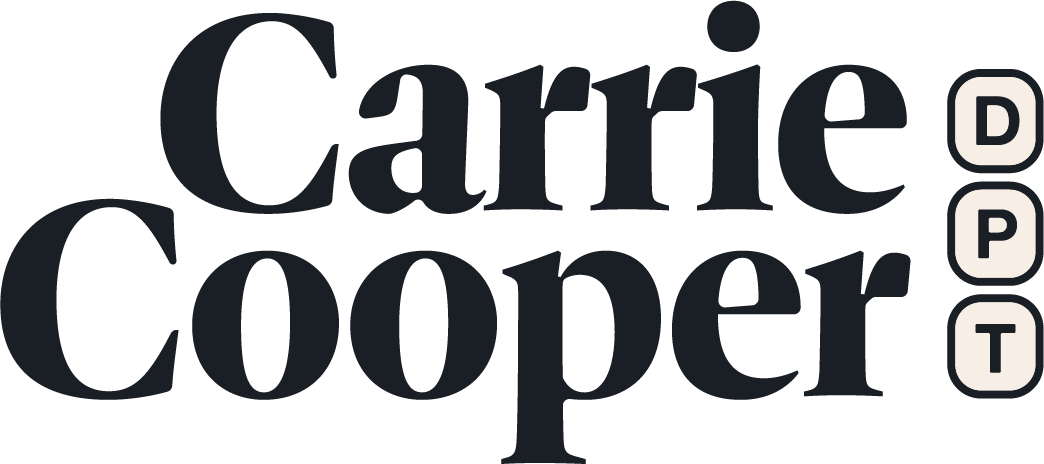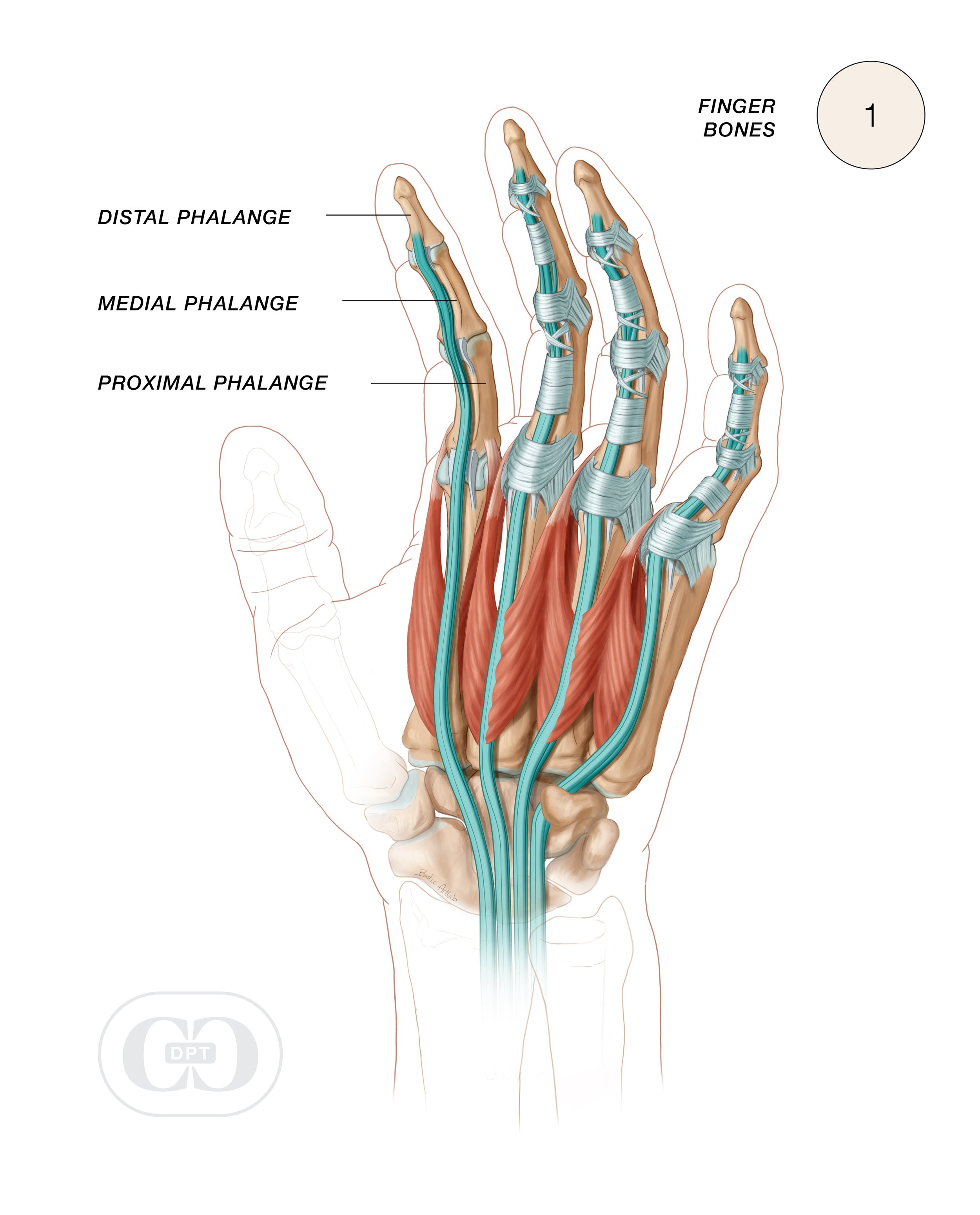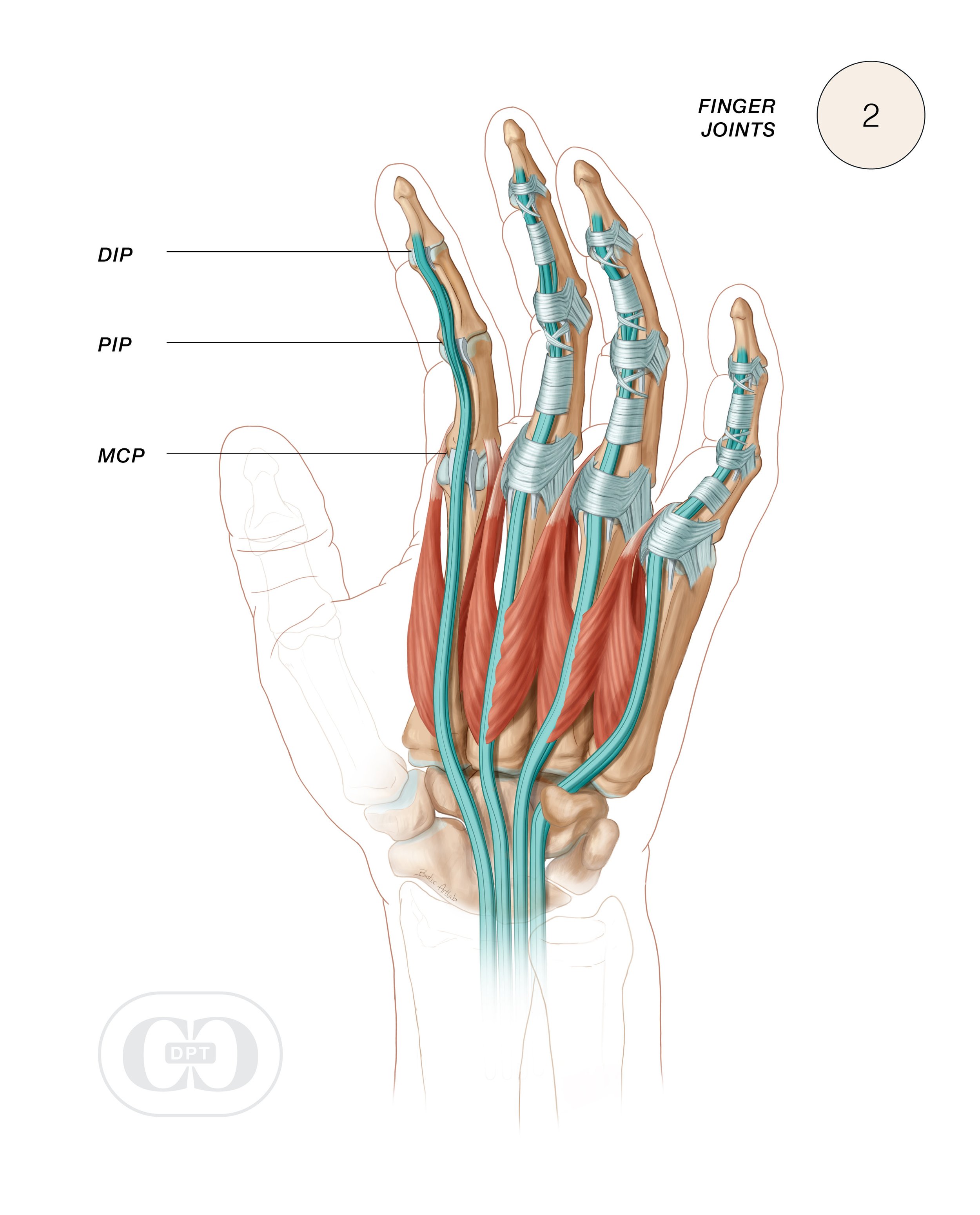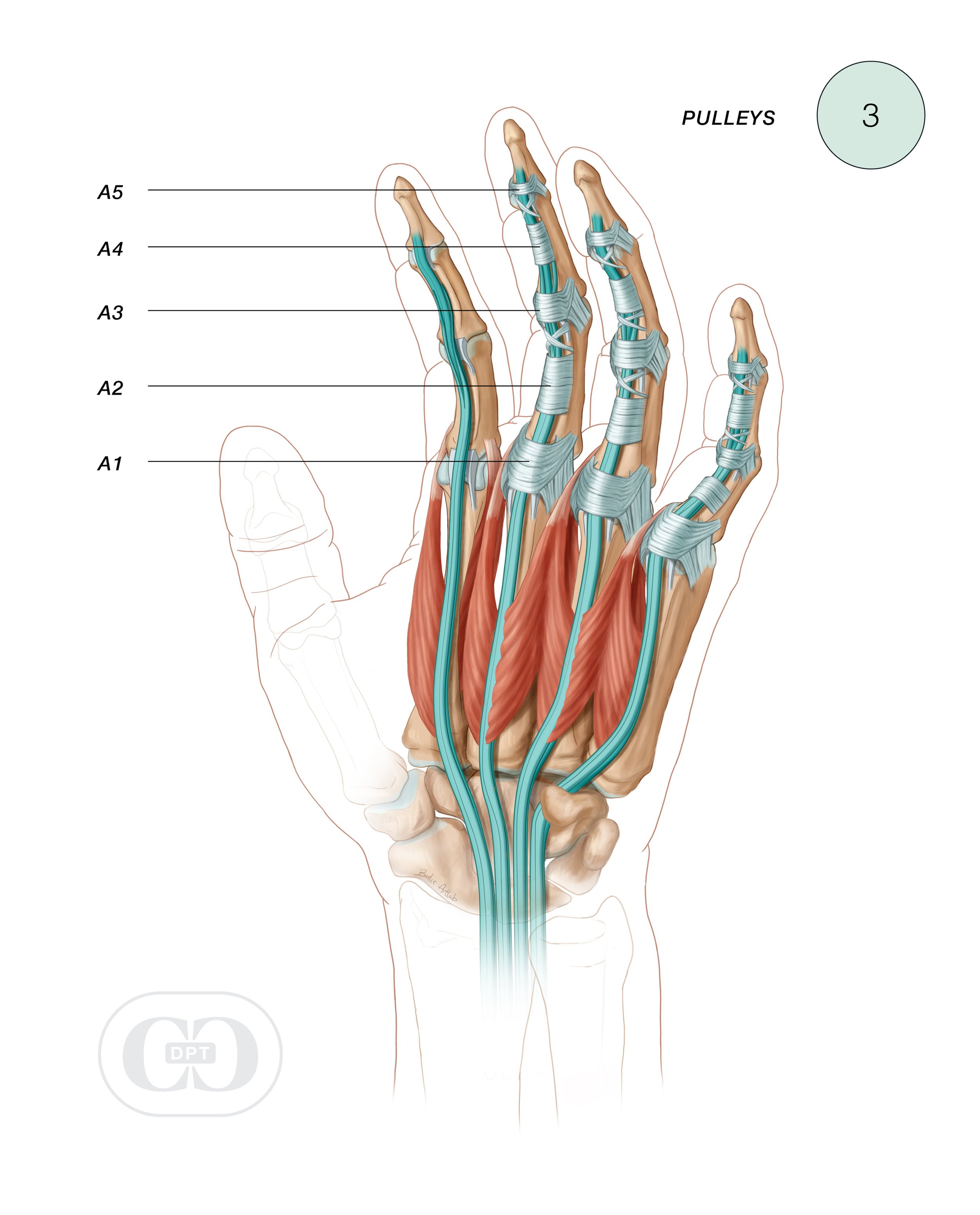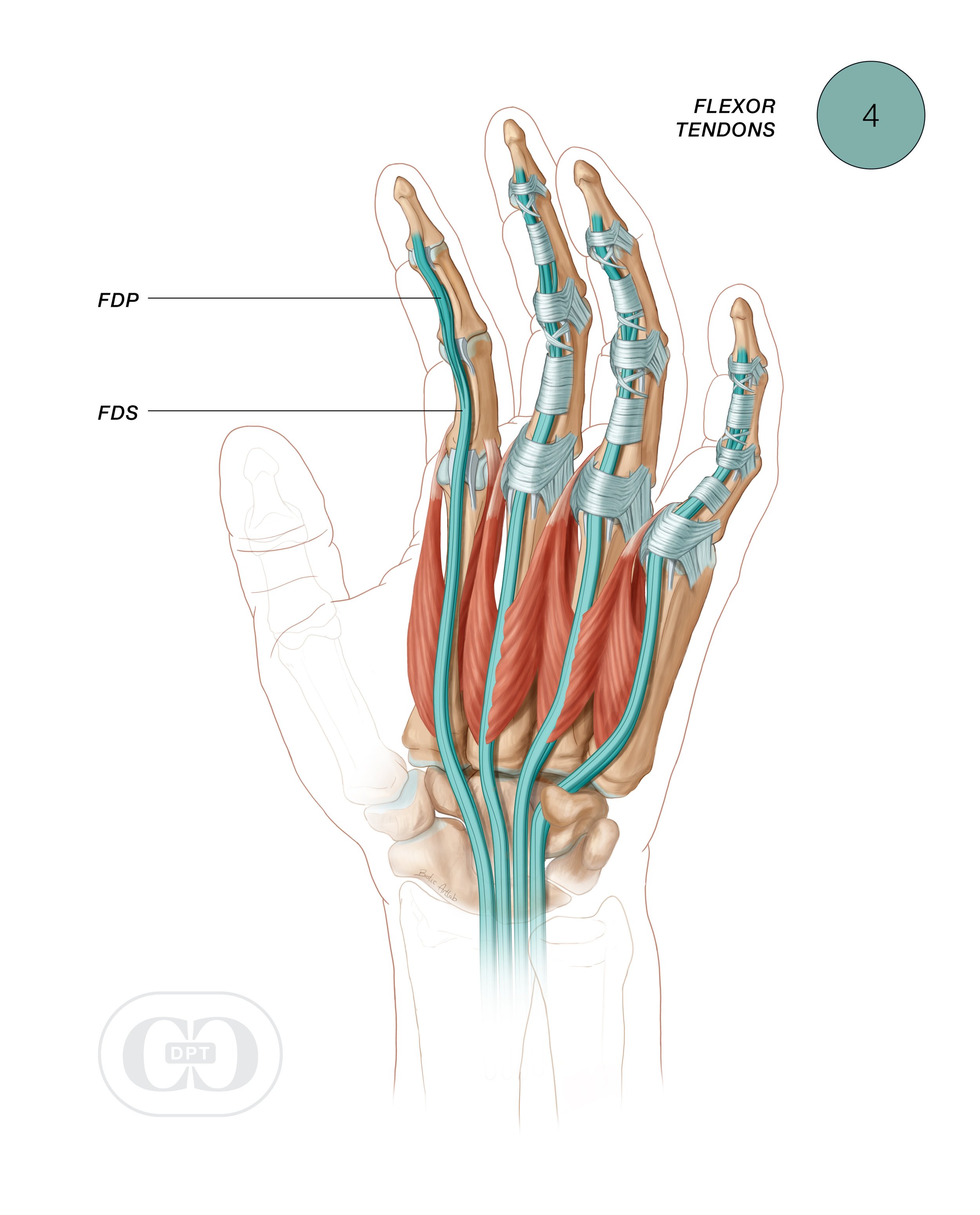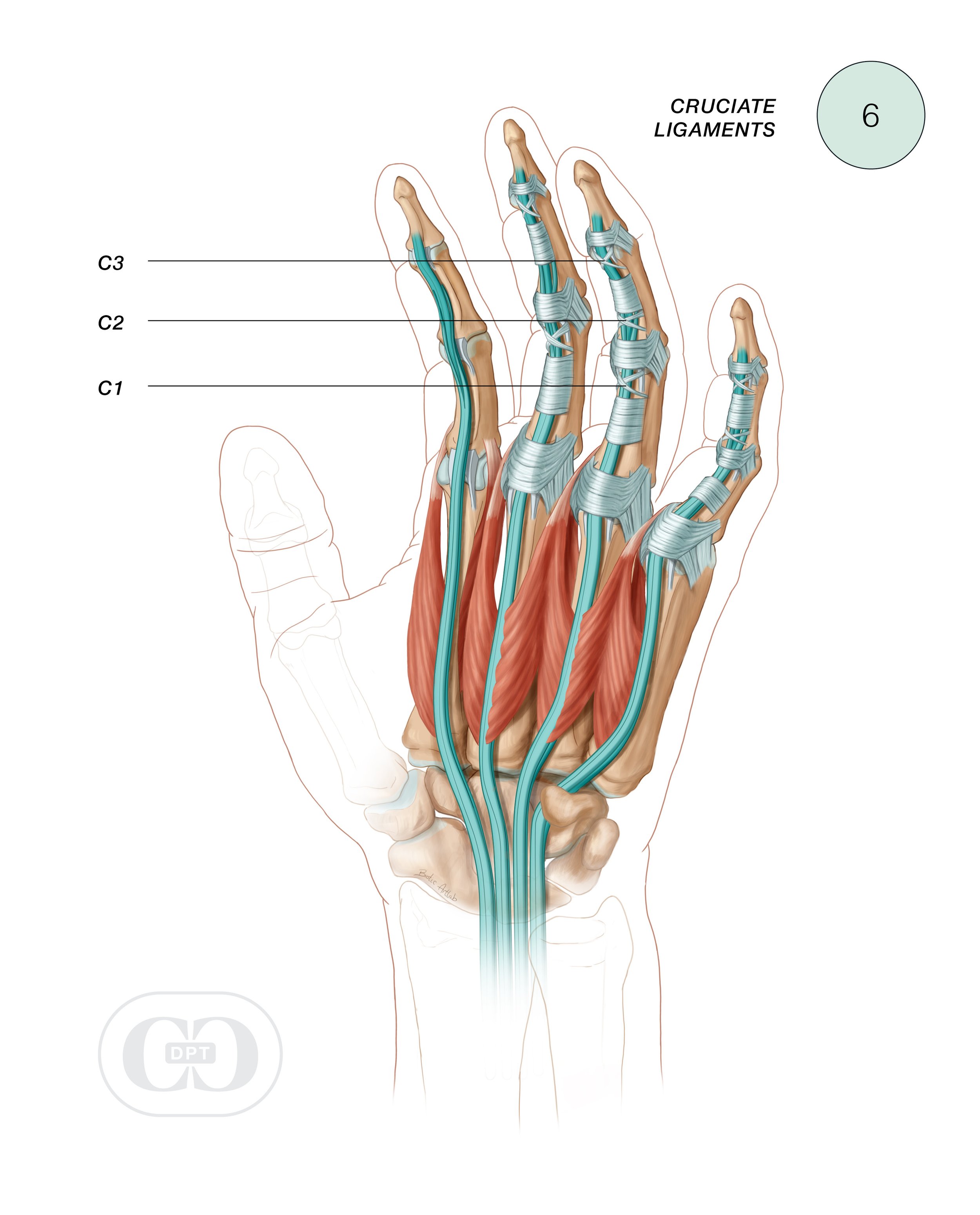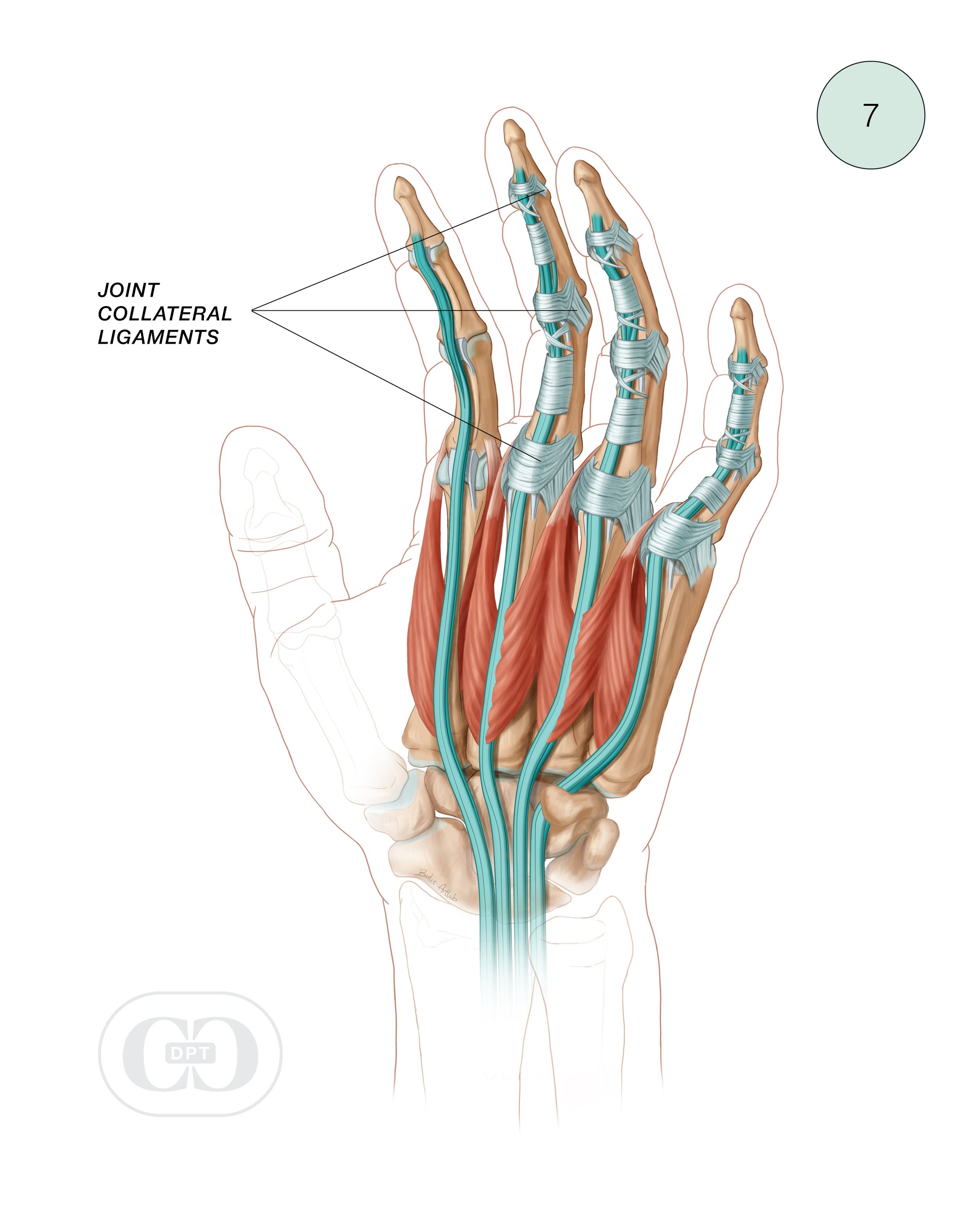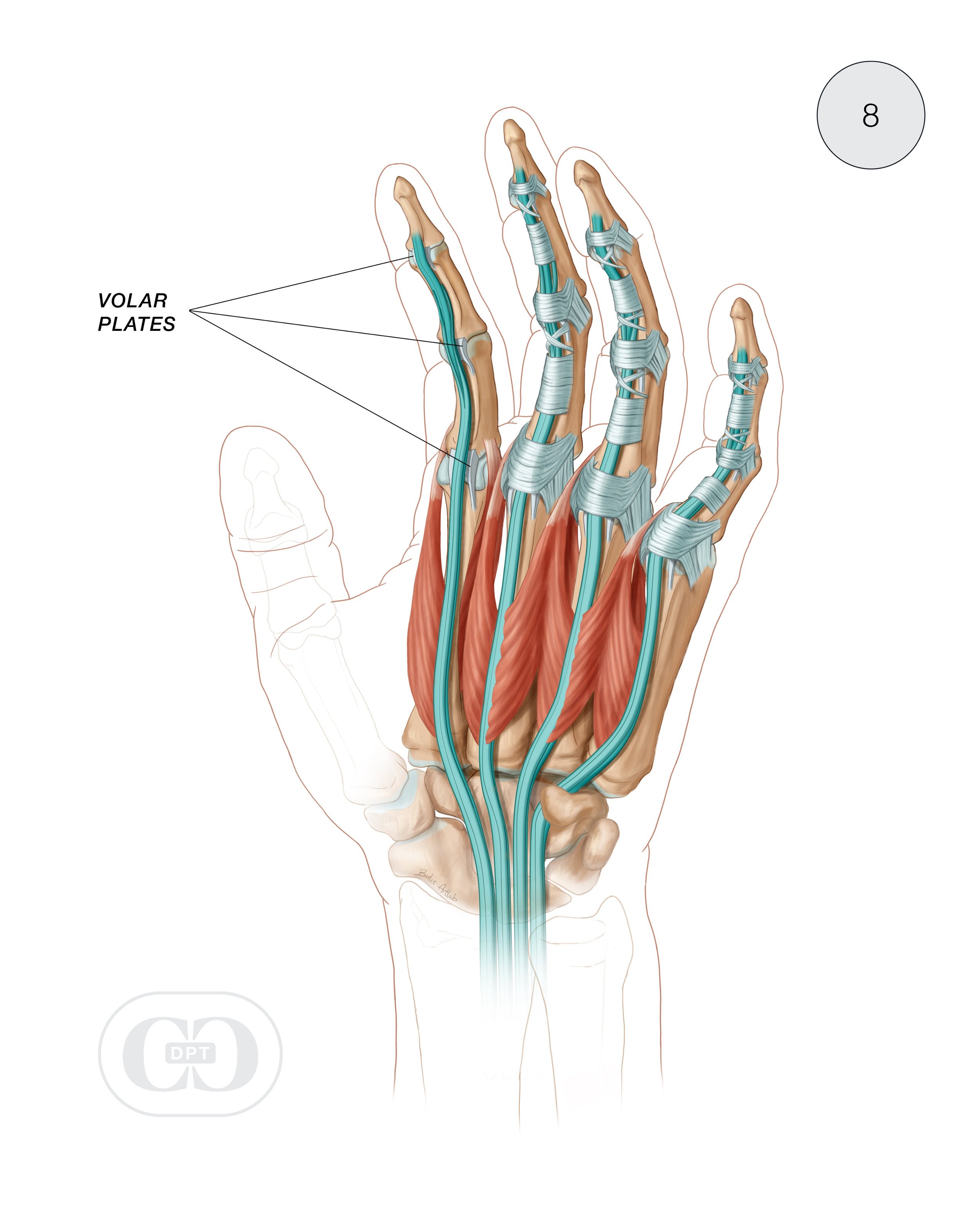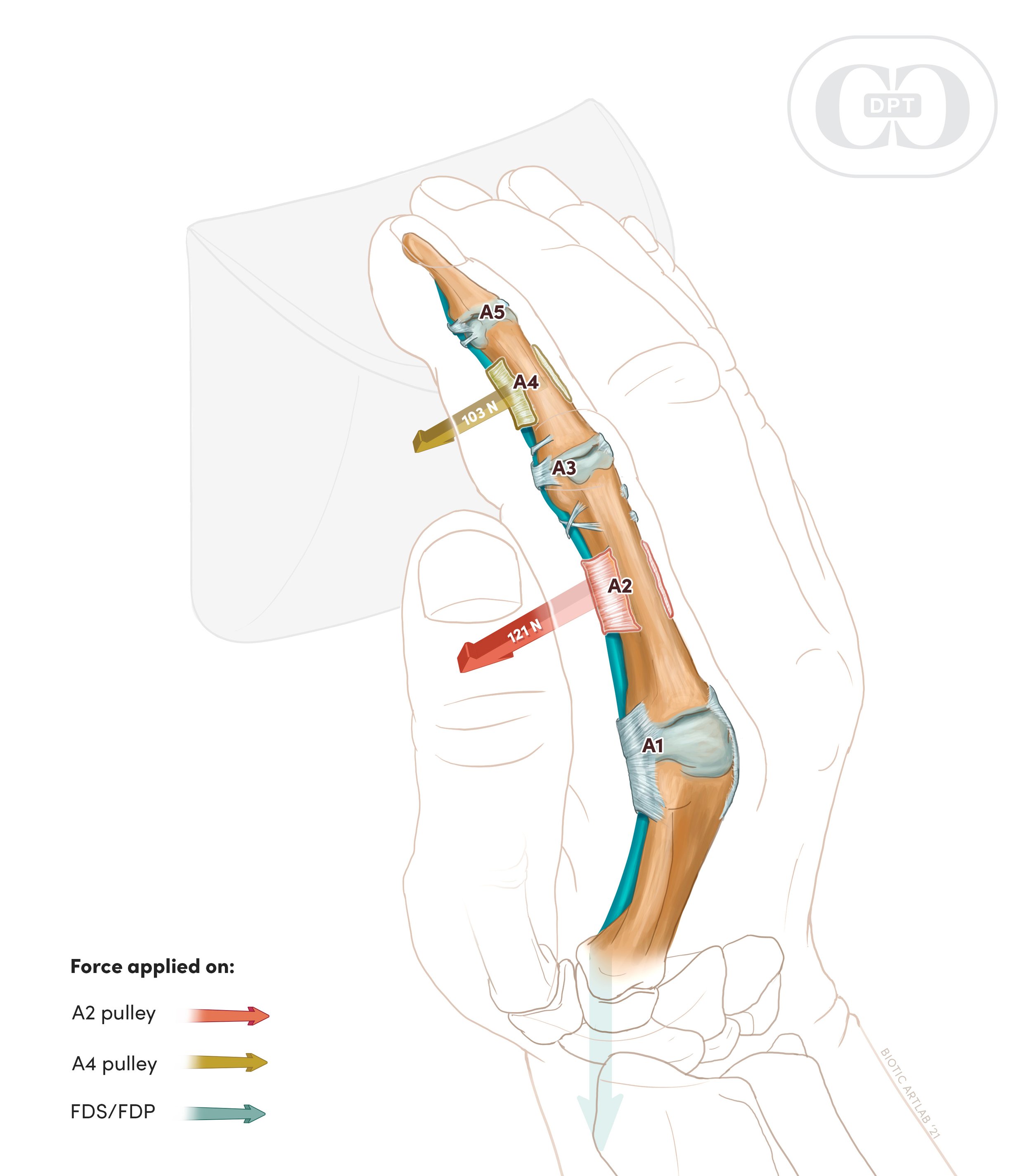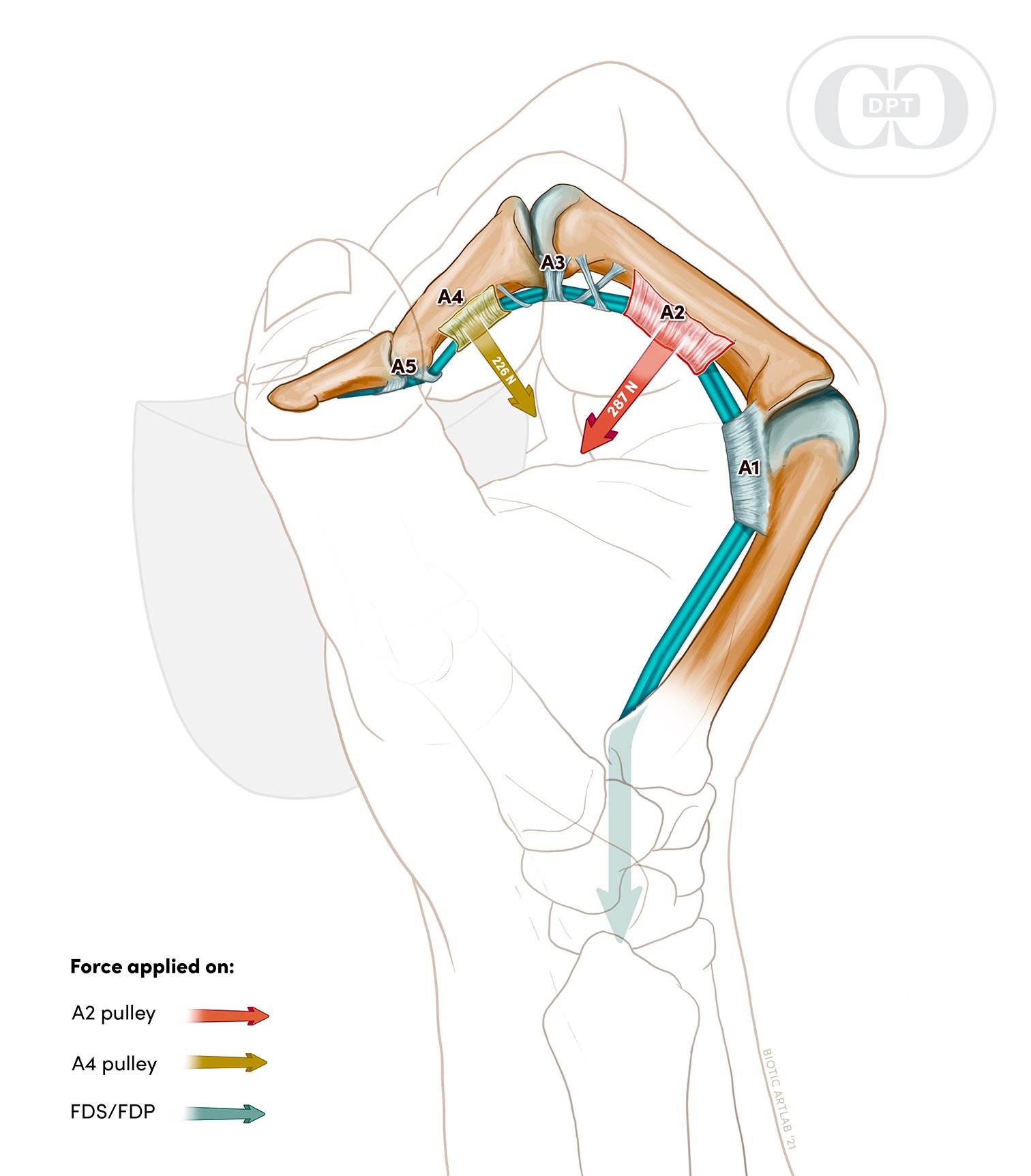
Finger Injuries in Climbers
WHY ARE FINGER INJURIES SO PREVALENT IN CLIMBERS?Climbing requires a lot from our hands. The most common injuries seen in our sport are A2 flexor pulley strains, and when not diagnosed and treated correctly, a simple strain can keep you off the rock for months. Here we’ll walk you through what you need to know to help understand what’s wrong, why you should care, and what you can do about it.
Anatomy & Function
-
In order to understand what’s going on with your injury, there are a few important structures within each of the four fingers you need get acquainted with first (excluding the thumb).
Three bones
Three joints: Joints are where two bones articulate. In each finger, there is a metacarpalphalangeal joint (MCP), proximal interphalangeal joint (PIP), and distal interphalangeal joint (DIP).
Five pulleys: A1, A2, A3, A4, A5. Each of the four fingers has all 5 pulleys, and their location is the same on each finger.
Two flexor tendons: The muscles of these tendons are located in the forearm, but the tendons insert on the fingers and move the fingers. Each flexor is one muscle that actually moves 4 fingers, so you don’t have a separate flexor muscle for each finger, but you do have separate tendons. They are called the Flexor Digitorum Superficialis (FDS), and the Flexor Digitorum Profundus (FDP). The FDP pierces through the center of the FDS prior to its insertion on the distal finger bone.
Hand/finger intrinsic muscles: These muscles are located primarily in the hand, but they insert on the finger bones and guide finger motion and finger position. They are known as the lumbricals and the interossei muscles.
Three cruciate ligaments: These ligaments are in an “X” pattern, and are located between a pulley and a joint on the path down the finger.
Joint collateral ligament: Collateral ligaments stabilize the sides of each joint.
Volar plates: These are stabilizing ligaments located on the volar side of each joint of the fingers.
Joint capsules: The capsule is like a bubble of connective tissue that surrounds the joint. (Not pictured in diagram)
-
The finger flexor pulleys are transverse retinacular tissue structures that hold the flexor tendon unit to the bones of the finger at 5 different points. Think of your finger like a fishing rod: the bones represent the rod itself, the tendon is the fishing line, and the pulleys are the eyelets that keep the line attached to the rod.
They act to mitigate forces of load through the finger to allow for finger flexion under resistance across the 3 finger joints. The estimated forces acting on pulleys vary depending on the hand position, hold size, and pulley location.
-
Bowstringing is not good. It refers to the excess in distance between the flexor tendon(s) and the bone. There are norms by which clinicians and researchers compare a given finger’s Tendon-Bone-Distance (TBD) and use it as an indicator that a pulley has been compromised. The bigger the TBD, the harder it is to bend the finger and function decreases. This is why timely treatment of a pulley is super important.
In Climbing
-
Simply put, we do crazy stuff with our hands that no one else does. The most common injury in climbing is an A2 pulley strain. Sometimes the holds we grip require that we apply extreme forces to the fingers in order to do even a single move. A recent study by Frolich, et al 2022, showed that climbers have adaptive changes to their finger pulleys, tendons and palmar plates following repetitive climbing-specific stress on climbers fingers. The change was noted starting at about 15 years of climbing experience when compared to non-climbing norms and continued to increase as the climber continued to climb over another added 10 years.
-
The flexor tendons cross many joints. Because of this, they need connective tissue that holds them to the bone and acts like a fulcrum for force production. Each pulley is positioned at a different point along this long line of tendon pull (recall our fishing rod comparison).
An open hand or slope grip position is relatively safe for a healing A2 pulley, in that the force placed on the A2 during active flexion in an open hand position is far less than it is when the finger is in a full crimp position (or even half crimp).
A full crimp puts the greatest amount of force through the A2 pulley. This is why it gets injured more than any other pulley.
-
Buddy taping connects one finger to the other, and is a signal to the body that a finger is injured, but it does nothing to protect an injured pulley. It does not support or protect the finger while it heals. What the buddy tape does do is teach it to rely on the closest ally and get even weaker while further eluding the healing process.
We have research-proven taping methods for reducing tendon bone distance. If you think you have a pulley injury, this is the first and only taping method you should attempt.
FRIENDS DON’T LET FRIENDS BUDDY TAPE AND CLIMB!
-
If you do not have pain with any grip positions, this is a great exercise for using the musculotendinous unit throughout its range of motion. Go for it. But for climbers with pulley injuries, this exercise puts load on a healing pulley. Don’t do it while you are in the healing process.
Self-Assessment
Now that you know the basics of the hand, it’s time to answer a few questions to figure out if you have a pulley injury, how bad it is, what you can do about it.
(Remember, seeing a physical therapist is the best way to figure out quickly and accurately what’s going on and what you should do to treat it. If you’re in severe pain, seek out a professional. Seriously.)
